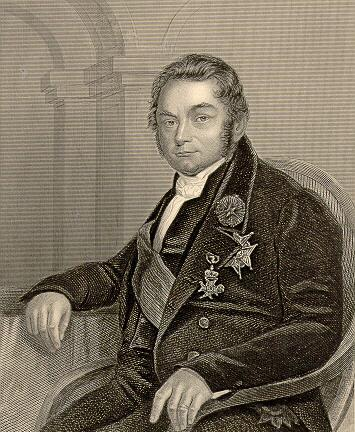Jöns Jacob Berzelius

Jöns Jacob Berzelius (August 20, 1779 - August 7, 1848) was a Swedish chemist, who invented modern chemical notation and is considered one of the fathers of modern chemistry (along with John Dalton and Antoine Lavoisier). Berzelius discovered the elements silicon, selenium, thorium, and cerium. He was inducted into the Royal Swedish Academy of Sciences in 1808, and became a member of the Swedish Academy in 1837.
Trained as a medical doctor at the Uppsala University, in 1802 he became a teacher, from 1807 professor, in medicine and surgery at the Stockholm School of Surgery. In 1810 the school became a part of Medico-Kirurgiska institutet, the predecessor to the Karolinska Institute, and Berzelius was appointed professor in chemistry and pharmacy. Not long after arriving to Stockholm he wrote a chemistry textbook for his medical students, from which point a long and fruitful career in chemistry began. While conducting experiments in support of the textbook he discovered the law of constant proportions, which showed that inorganic substances are composed of different elements in constant proportions by weight. From this, by 1828 he compiled a table of the relative atomic weights (with oxygen set to 100) of all elements then known. Taken together, this work was a strong confirmation of the atomic hypothesis; that inorganic chemical compounds were composed of atoms combining in whole number amounts. In discovering that the atomic weights were also not integer multiples of hydrogen's, Berzelius also disproved Prout's hypothesis that elements were built up from atoms of hydrogen. Berzelius in 1838 discovered proteins.
In order to aid his experiments, he developed a system of chemical notation in which the elements were given simple written labels -- such as O for oxygen, or Fe for iron -- and proportions were noted with numbers. This is the same basic system as is used today, the only difference being that where we would use a subscript number (i.e., H2O), Berzelius would use a superscript.
A biography on Jac. Berzelius - his life and work was written by J. Erik Jorpes and published in 1966 and 1970 (originally in Swedish, first published in 1949).
External links
- Publications - at Project Runeberg
- Nova Analysis Aquarum Medeviensium - at Project Gutenberg
